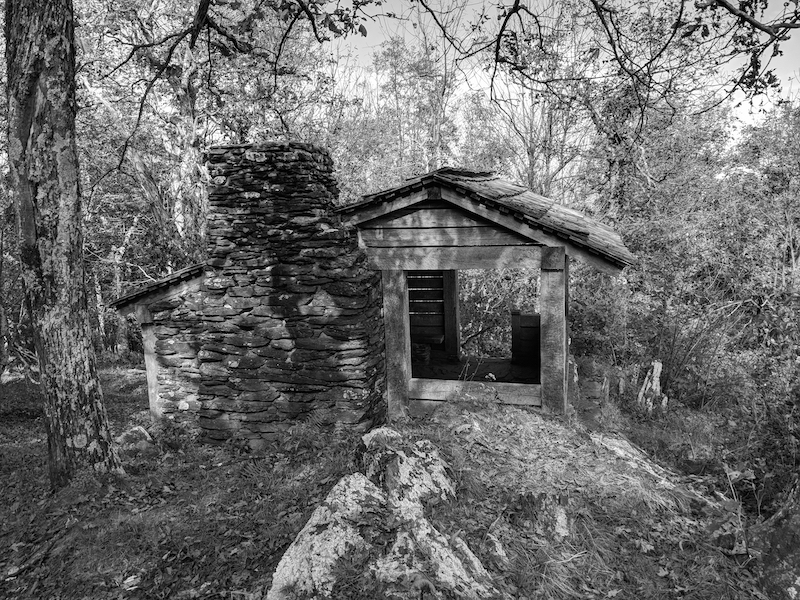During his thru hike of the Appalachian Trail in 1948 — the first such end to end hike in one season — Earl Shaffer spent the night at the only trail shelter built on the original route of the Appalachian Trail between Damascus, Virginia and McAfee Knob just outside of Roanoke.

That old shelter still stands. To find it, all you need to do is drive the Blue Ridge Parkway south from the Rocky Knob Recreation Area and pull off at The Saddle turnout. From the parking area, look to your right and you’ll see a trail headed off into the forest. That trail is the original Appalachian Trail, although there is no sign or blaze to let anyone know that.
The shelter is just about a quarter mile uphill and it’s well worth the walk. When you get there, you’ll have extraordinary views of the Piedmont to the east. The green hills roll away to the edge of sight and if you peer down and just a bit to the right you can see the sun glinting off a smallish pond just off Belcher Road. That pond is the source of the Dan River, the river that carved the mighty Dan River Gorge a few miles south, these days home to two power dams originally built to serve the city of Danville far to the east. The Pinnacles of Dan rise up in the middle of the Gorge and the river that spills out of the lower dam is beloved of both kayakers and those fishing for trout. The Upper Dan is one of the few excellent brown trout fisheries in the state.
Earl described his night there as cold and windy, which really isn’t much of a surprise given that the winds do blow up from the Piedmont below. I’ve been there at least four times and half of those visits the place was so fogged in that I couldn’t see more than 20 or 30 feet in front of me and felt the chill even on a hot May or June day.
The Civilian Conservation Corps built the shelter, which helps to explain why it still stands. The CCC boys did like to work with stone and cement and this shelter is a perfect example of their handiwork. The floor is concrete, the stones are set in concrete, and the large beams (likely American Chestnut) have resisted both insects and weather since the 1930s. There is even a fireplace inside, although Earl wrote that it was too windy that night for him to get a fire going.
This old shelter was intended to be the first such structure along the Appalachian Trail in this region and it was the first. But it was also the last, because the ATC couldn’t get it together to build more and then the Second World War happened and after the war the trail moved away. So, it stands a mute reminder to a grand vision that was never quite realized.